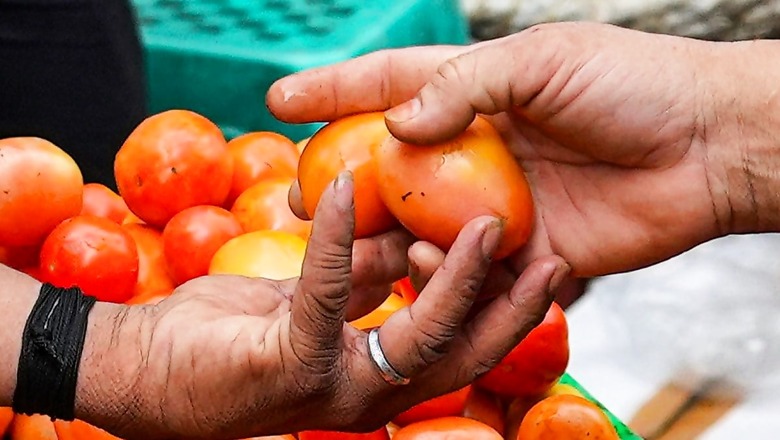
views
The little red tomato, once a humble delight, is now burning a large hole in the pocket of the average consumer with prices surging from a mere Rs 15 per kg in the first week of May to a staggering Rs 110 by the end of June – a jaw-dropping hike of close to 200 percent in a matter of weeks.
Tomato woes aside, the Indian consumer is heavily reliant on this essential kitchen item. News18 spoke to several experts, including agri-meteorologists, agri-researchers as well as scientists, to explain to the consumer why tomatoes have become more expensive.
Late onset of monsoon, unseasonal rain to blame
The spike in tomato prices can be attributed to two major reasons, as explained by Dr R Gopinath, principal scientist at the M Swaminathan Research Foundation in Chennai. The first one being the late onset of the monsoon and, the second, the unseasonal rain and flooding in Andhra Pradesh and Karnataka during the harvest periods.
“If you see, around 20% of the country’s tomato production comes from Andhra Pradesh, and the rest comes from Karnataka, Maharashtra, and other states. If there is a late onset of the southwest monsoon, it majorly affects vegetable production,” Gopinath told News18.
“The same phenomenon took place last year as well. If there is any further delay in the rains in July and August, there will be a steep increase in prices as the festive season will begin,” said the scientist.
He added: “We can expect an increase in onion prices as well. Maharashtra and Karnataka are large producers of the vegetable, and they are daily necessities and not seasonal requirements.”
Normally, as far as Karnataka is concerned, monsoon sets in the first week of June. For agricultural purposes, it usually starts in the second week of July. In Karnataka, around 25 percent will be sown before the first week of July, and around 75 lakh hectares are sown mainly in July, said Prof MB Raje Gowda, an agri-meteorologist from the University of Agricultural Sciences, GKVK, Bengaluru.
He also made an important observation: the rainfall has reduced by 40 to 45 percent in parts of Karnataka, like in hilly and coastal regions while the south and north interior parts of the state have received rainfall that usually occurs in June.
“If the rains are delayed beyond the third week of July, then the crops can be affected and the farmers may fail to receive required precipitation. In such cases, we recommend cloud seeding and other solutions. We are advocating for the farming community to have patience and not to worry,” Gowda said.
The scientific community also pointed out that the central government has predicted that this year India will receive 90 to 95 percent of the expected precipitation. “In Karnataka, we usually receive 850 mm rainfall in normal years, but this year we may get around 820 mm on an average,” Gowda added.
Severe supply disruptions
There have been severe disruptions in tomato supplies from key districts such as Kolar, Chikkaballapura and Bengaluru rural. In Kolar, there has been widespread crop loss resulting from the white fly disease, said officials of the state horticulture department. The agricultural produce market committee (APMC) yard in the district – known to be the largest tomato market hub in Asia spanning 20,000 hectares – saw a steep price rise per box (around 15 kg per box) from Rs 700 to almost Rs 2,500, said a vendor who works there.
“This situation (tomato price rise) will normalise in the next two to three weeks,” Gopinath said. The scientist cautioned farmers and those involved in agricultural activity to be prepared for similar situations in future as unseasonal and incessant rain coupled with a late monsoon onset were becoming regular features.
“We need to find solutions to adapt to climate change and develop strategies to handle such situations in the future. Only then can we avoid price fluctuations. A scientific production strategy is also required to protect cultivations from effects like El Niño, floods, and diversify production into other areas,” Gopinath added.
The price monitoring division under the department of consumer also indicated a notable increase in the average retail price of tomatoes, climbing from Rs 70 to Rs 125 in some markets.




















Comments
0 comment